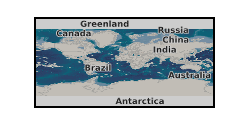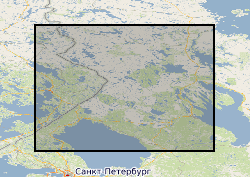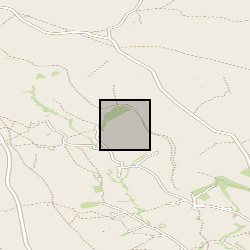2023
Type of resources
Topics
Keywords
Contact for the resource
Provided by
Years
Formats
Representation types
Update frequencies
Scale
Resolution
-

This dataset contains the raw data from Thermogravimetric Analaysis (TGA) of samples from 3 different field locations - Warton, Derwent Howe, Harrington. The data was collected in 2022-2023. The data was collected for the purpose of identifying the volume of different carbon-bearing materials (specifically carbonate minerals) in the collected samples. The data was collected by John MacDonald and Robin Hilderman (University of Glasgow) who retain the original data.
-

Three datasets, ground-penetrating radar, side-scan sonar and sub-bottom profile data (CHIRP), were collected in April and June 2022 from the proximal Skeiðarársandur area (~63.9 N, 17.2 E) and Skeiðarársandur coastline (63.7 N, 17.5 E) that lie at the mouth of Gígjukvísl. Ground-penetrating radar (GPR) data acquired for this project on 15th and 18th April 2022 provide new insights into the sediment architecture of differing depositional environments at Skeiðarársandur, southeast Iceland, including: (i) a recently emplaced jökulhlaup deposit in a large ice-proximal depression, and (ii) the coastal environment of a vast glaciofluvial braidplain. Radar data collected in the ice-proximal depression utilised a 250 MHz Utsi GroundVue (GV) 3, a shielded single-channel bistatic radar system suited to near surface (0-10 m depth). Approximately 30 km of 250 MHz GPR data were collected parallel and perpendicular to the jökulhlaup flow direction. The GPR data from the coastal regions of Skeiðarársandur were collected using a 100 MHz Utsi GV7. The 100 MHz Utsi GV7 is a ruggedised and unshielded radar system with a centre-frequency of 100 MHz and an emitted bandwidth of ~1-160 MHz. The radar system has a maximum time-window of 800 ns and each stacked radar trace is comprised of 256 samples (i.e. one sample every 3.125 ns). Approximately 12 km of 100 MHz radar data were collected at the Skeiðarársandur coastline. File format for the raw data includes .dat, .gps, .gpt and .hdr. Positional (Lat, Lon) data were acquired using a handheld GPS connected via USB to the ruggedised laptop (100 MHz Utsi GV7) or connected directly to GPR control unit (250 MHz Utsi GV3). All GPS data were recorded directly in the Utsi GroundVue software by logging an NMEA string concurrent with radar trace samples (i.e. an XY position for each individual sampled radar trace). Side scan sonar, CHIRP and single-beam echosounding data were collected within a large proglacial lake fronting Skeiðarárjökull (63.5 N, 16.3 W) between 11th to 24th June. Side scan data was acquired using an AquaScan Precision Side Scan Sonar System. During surveys the tow fish was lowered to a constant relative position and depth below the boat hull. This data provides an imaging of the lakebed which is used for qualitative description of lakebed features (filed are .xtf). A hull mounted Sonarmite BTX single-beam echosounder was used to provide depth control which was linked via Bluetooth a hull mounted Leica GS14 (.txt files). Sub bottom data was acquired using Bathy 2010PC CHIRP Sub Bottom Profiler operating at dual frequency (3.5KHz and 10.0KHz). This was towed alongside the boat and used to constrain lakebed depth as well as buried sediment architecture. Ping rate varied based on depth of returns. Raw data was collected at .seg files. All lake survey data is georeferenced using GNSS data from boat mounted Leica GS14 receiving real-time corrections from a base station over a known location.
-

This dataset contains folders of field photographs. Photographs were collected from 4 different field locations - Warton, Glengarnock, Derwent Howe, Harrington. There is a folder for each location, and within each of those there are folders labelled by whether they are contextual, or of samples. The data was collected between 2021 and 2023. The data was collected for the purpose of documenting the appearance and characteristics of samples collected. The data was collected by John MacDonald and Robin Hilderman (University of Glasgow) who retain the original data.
-

A geodetic survey was used to provide ground control points for the structure from motion surveys. Black and white checked mats placed on the ground were used for the ground control points and these are visible in the structure from motion imagery. Ground control points were collected from the proximal Skeiðarársandur area (~63.9 N, 17.2 E) on the 15th to 17th April and 19th April 2022. Ground control points were collected at the Skeiðarársandur coastline (63.7 N, 17.5 E) that lie at the mouth of Gígjukvísl on 18th April 2022. In total 46 ground control points were collected providing the latitude and longitude (WGS84) of each point. The GNSS (Global Navigation Satellite System) data were collected using a Leica GS14 rover and base station. The rover was placed on an antenna . Antenna height was measured for each survey. The Antenna height for the rovers on 15th April-17th April, 18th April part 2 and 19th April were 2 m. The antenna height on 18th April part 1 was 0.00m. Latitude, longitude (WGS84) and elevation data was collected at each ground control point. This data was used to provide spatial control for the structure from motion survey. GNSS data was also collected during the geophysical surveys that were carried out in 11-24th June 2022. These surveys included the side-scan sonar and CHIRP data collected in a proglacial lake fronting Skeiðarárjökull and used to georeferenced the survey data. The base station data and rover data was post-processed against a permanent GNSS station located at Fagurhólsmýri (63° 52' 28.84" N 16° 39' 11.87" W) maintained by the IMO. Corrected data is used to update and shift RTK GNSS observations. This data was collected by staff at Newcastle University in the School of Geography, Politics and Sociology. File format of raw data is M00 the processed data is in a text document, as pdf and ascii files.
-

This dataset contains raw experimental triaxial testing data as outlined in "Castagna, A., Ougier‐Simonin, A., Benson, P. M., Browning, J., Walker, R. J., Fazio, M., & Vinciguerra, S. (2018). Thermal damage and pore pressure effects of the Brittle‐Ductile transition in Comiso limestone. Journal of Geophysical Research: Solid Earth, 123(9), 7644-7660.s, http://dx.doi.org/10.1029/2017JB015105". The data is provided in a .zip folder containing the files of 16 experiments that are accompanied by a README file for introduction. Files format is Microsoft Excel Worksheet (.xlsx) and data are tabulated. Each file contains the corresponding relevant sample’s details, and each column of data is clearly labelled, units included. For each experiment, time, radial and axial pumps volume displacements and pressures, top and bottom pore fluid pumps volume displacements and pressures, internal temperature, LVDT signals were recorded. Twenty right cylindrical samples of ‘Comiso’ limestone (Ragusa Formation; Sicily) were tested in triaxial compression at a range of confining pressures simulating depths of 290 m, 620 m, 1.2 km, and 2.0 km respectively, assuming an average density of the over-burden load of 2470 kg/m3. Prior to strength test, each sample was either oven dried (ca. 12 hours at 85 °C followed by cooling in a desiccator for 1 hour) or water saturated (samples in distilled water under vacuum for 24 hours). A subset of these samples has also been thermally treated at 150, 300, 450 and 600oC to induce thermal cracking prior to the mechanical testing. All tests were conducted at 10-5 s-1 axial strain rate in assumed drained conditions when relevant, and at room temperature. For saturated tests, the initial loading was applied in two steps, first by increasing Pc hydrostatically (σ1=σ2=σ3) until the desired confining pressure was reached, and then introducing pore fluid pressure, as per the functionality of the experimental set-up. The experiments were conducted by Drs A. Castagna, M. Fazio and P. Benson using the Snachez triaxial cell at the Rock Mechanics Laboratory of the University of Portsmouth. All responsible for the collection and initial interpretation of the data. Only 17 experiments are reported in this set of data; the missing 3 datasets are believed to be only available on the local computer storage of the triaxial apparatus used at that time.
-

Leeds dynamo simulations for the analysis of rapid changes in the geomagnetic field. In each folder, the following file can be found: - state.cdf.in - the configuration file used as an intial condition to launch each simulation Some folders have multiple state.cdf.in files for each run of the same simulation, if only part of the data was needed to be reproduced. Additionally, most folders contain: - LSD.info/main.info - Contains details of the parameters for each simulation, which can be used for reference when recompiling the code - LSD.out/main.out - the exectuable used to submit a simulation to a hpc; for the code to be reran, this would have to be recompiled (see Leeds_Dynamo_Code_Manual.pdf) - run.bolt/run.sh - the scripts used to submit a simulation to the leeds hpc (.sh file) or archer2 (.bolt file) Details of how to run the Leeds dynamo code can be found in Leeds_Dynamo_Code_Manual.pdf, which contains a more in-depth description of input parameters, boundary conditions, output data etc. The parameters for each simulation can also be found in the spreadsheet 'SimulationsLog'. More details about the difference between thermally-driven and thermochemically-driven cases can be found in Nakagawa and Davies, 2022. Note all simulations have Prandtl number Pr=1. We have ran a series of simulations to help us elucidate the origin of rapid changes in the Earth's magnetic field. Observational models of the magnetic field have found changes in field intensity and direction that significantly faster than the values and averages for the modern field. The simulations provided here have been analysed to find the features that best reproduce dynamical and morphological agreement with the observed field, as well as to find rapid changes in the simulated field that are in agreement with that of the observed field (see Nakagawa and Davies 2022). Simulations have been ran using the Leeds Dynamo Code, and the configuration files provided here allow users to reproduce and interpret the data used for analysis.
-

This dataset contains the raw and processed data from carbon and oxygen stable isotope analysis of calcite in samples from 2 different field locations - Warton and Glengarnock. The data was collected in 2022-2023. The data was collected for the purpose of identifying whether the carbonate minerals in the collected samples contained atmospheric carbon dioxide. The data was collected by John MacDonald and Charlotte Slaymark (University of Glasgow) who retain the original data.
-

The BGS PSA dataset provides insurers and homeowners access to a better understanding of the shrink-swell hazard at both the individual property and/or postcode level for Great Britain. It builds upon the GeoSure shrink-swell data by mapping the hazard to the individual building polygon and considering the other susceptibility factors of building type, foundation depth, and drainage and tree proximity. The user receives GIS building polygons with an overall susceptibility to subsidence score between 1-100. Scores are also classified from non-plastic to very high. Each building polygon is also scored from 1-10 for each subsidence factor (geology, foundation, drainage, building type, building storey and tree proximity). Postcode data is also available as a table and shapefiles showing the ‘average’ PSA score for all buildings within the postcode. The identification of shrink-swell related subsidence prone areas, alongside the inclusion of potential sources to exacerbate this phenomena, can better inform insurers and homeowners and form the basis to make decisions concerning prevention and remediation. The product enhances geological information obtained from GIP and GeoSure via the inclusion of the crucial shrink-swell susceptibility factors (proximity to trees and foundation depth). This therefore allows the derivation of a risk element for the housing stock at Building level, which is then generalised to Postcode level.
-

Demonstration of hydrothermal ammonium mobilization in the Paleoproterozoic with possible implications for biological productivity. The data include organic carbon and nitrogen abundances and isotopic ratios, as well as metal abundances. Samples span from sedimentary rocks to altered igneous rocks, where lithologies are provided in the CN data file. The N-enrichment in the usually N-poor igneous rocks indicates transfer of ammonium from organic-rich sediments and can be used to estimate the ammonium concentration of the hydrothermal fluid at the time of deposition. More details are provided in Stüeken, E.E., Kirsimäe, K., Lepland, A. and Prave, A.R., 2023, Astrobiology, 23(2), pp. 195-212.
-

Long-period Magnetotelluric time series recorded in Jan to Feb 2022 at site NT91 near Alnham, England, UK (NT91). Funded by NERC, grant number: NE/V002694/1 "SWIMMR Activities in Ground Effects (SAGE)". These data consist of measurements of the Earth’s natural magnetic and electric field variations.
 NERC Data Catalogue Service
NERC Data Catalogue Service